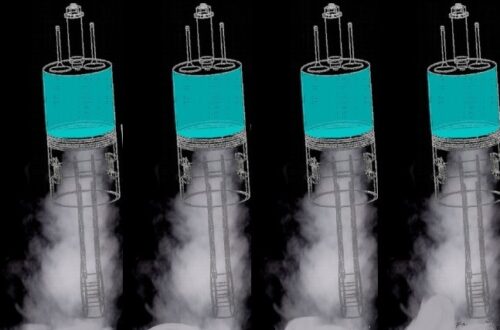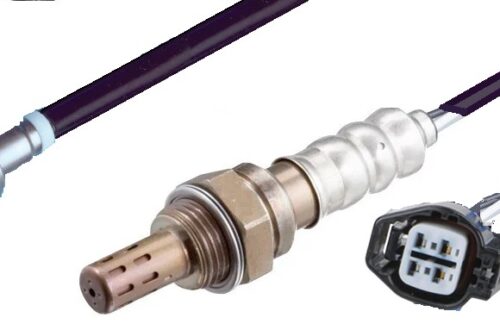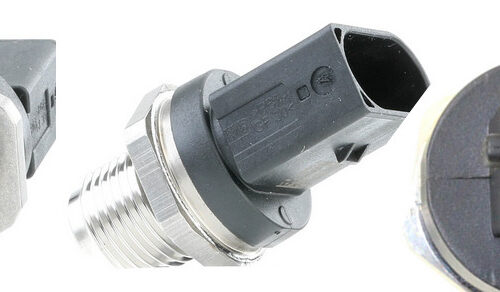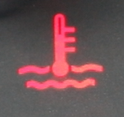
8 simple steps to diagnose the car temperature symbol advent
Does the temperature symbol on your dashboard blinks or stays displayed? As you maybe already expected, something is wrong with the engine cooling system or its control. The following steps will help you to troubleshoot the problem.
For the analysis, two questions are asked to be able to distinguish between two cases. The case where the light is on at the engine start-up and the case where the lamp is turn on during driving.
Warning!
Disclaimer: This site and the author are not responsible of any misuse of the provided information. The information is only given to help for fault diagnosis. Injuries, electric shocks, burns and other life threatening hazards can be a result of an inappropriate action on the engine. If you are not familiar with engines and not sensitized to the safety procedures, please contact a professional. Any action on the car and its consequences are under your sole responsability.
Is the temperature symbol lamp turned on at engine start-up after a night rest?
If the temperature symbol is switched on at the start-up of the engine, after a night rest, this means in general that the coolant level is inappropriate or the temperature sensor is faulty.
Once the engine is off and cooled down, check the level of the coolant. It should be between the min and the max level in the coolant expansion tank.
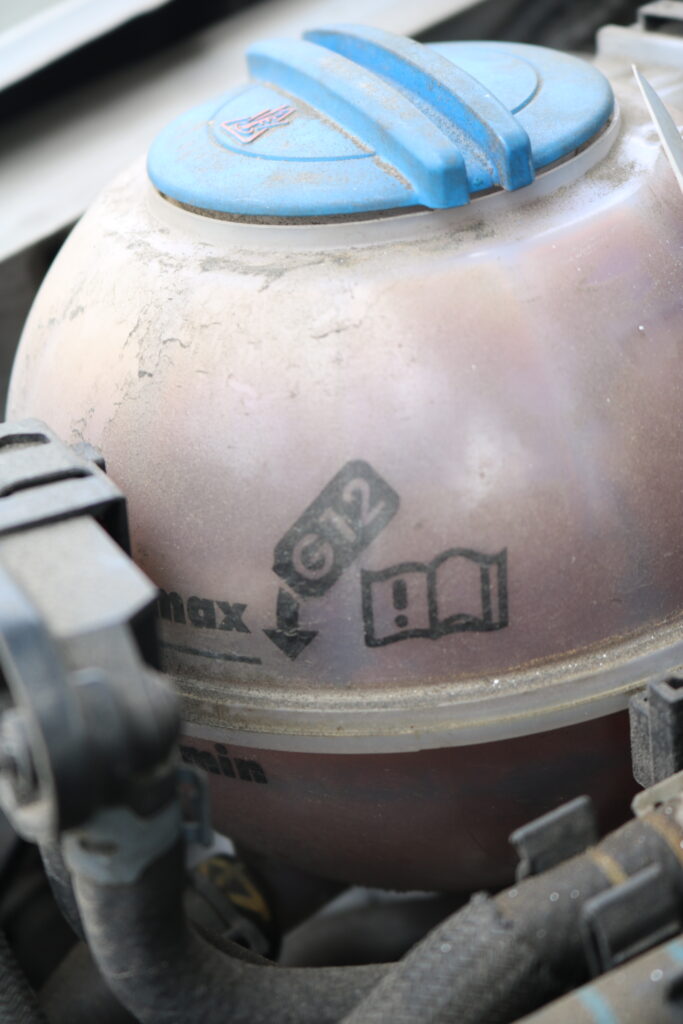
The engine should be filled with the appropriate coolant recommended by the car manufacturer. The type of the coolant can be found on the expansion tank, as it can be seen in the figure (in this case, the “G12” is recommended). You can also find the type of the appropriate coolant in the vehicle’s owner manual.
Recurrent low level of coolant indicates the presence of a leakage. The circuit should be checked for external and internal leaks and repaired.
High level indicates usually an intrusion of another fluid. Always, once the engine is off and cooled down, check for the presence of oil in the expansion case or radiator. Actually, an established connection between the lubrication and the cooling circuit can result in finding traces of oil in the coolant circuit.
If the level of the coolant is between the limits, you need a diagnostic tool to read the memory of the engine controller. The code explanation code should give you an indication about the problem.
Is the temperature symbol indication lamp turned on while driving?
The role of the cooling system is to expel the heat out of the engine block and maintain the engine in a specific temperature range. The coolant is pumped through the engine block and follows some specific passages, so that it catches a part of the engine released heat. This heat is transferred, by the coolant, to the heat exchanger (radiator), where it is released to the air. At this point, the temperature of coolant decreases and ready to make a new cooling cycle. A thermostat valve is regulating the temperature at the engine outlet, by controlling the coolant quantity to be cooled and the quantity to be by-passed.
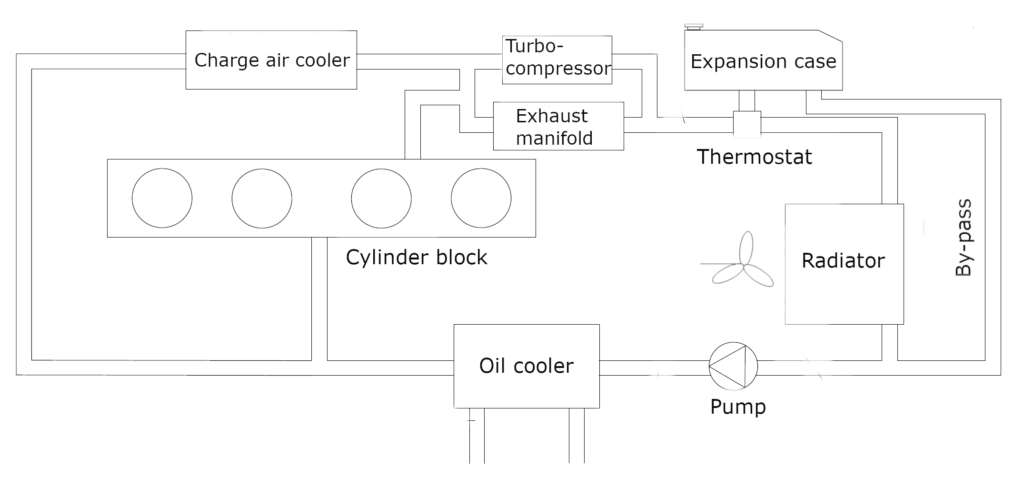
Steps to diagnose the temperature symbol lamp indication
Actually, the problem can be one among the following:
- inapropriate coolant level
- sensor failure
- pump failure
- thermostat valve failure
- leaks (internal and external)
- intrusion of other liquids or oil (usually at the cylinder head/valve level)
- intrusion of exhaust gas into the coolant circuit (cylinder head gasket failure)
- clogging (heat echanger)
- fan system failure
For pieces of information related to inapropriate coolant level, please check the previous section.
Sensor failure can be, in most cases, recognized by the engine controller (ECU). Hence, you need to use diagnostic tool to read the memory of the engine controller. The code explanation string should give you an indication about the problem. In addition to that, some fault codes related to the pump or the thermostat can be saved, if they are electrically actuated.
The other possible errors, which are not linked to the electrical part, are usually reported by the ECU, only as high or low temperature problems.
Low temperature problem is usually linked to a thermostat regulating failure. The high temperature can be the result of one or combined problems listed above.
For the diagnosis, check first the obvious
- use a scan tool (please note that in some cases a retarded fuel injection can cause an engine overheating, so faults related to the depollution system should be taken seriously)
- check the level of the coolant and its characteristics (residual of oil, combustion, …) and always once the engine is off and cooled down and don’t touch the coolant with your hands or get it in a direct contact with your skin
- check visually for external leaks
- check the fan (at temperature rise-up, the fan should be activated automatically, before the temperature lamp turns on)
- check the pressure of the coolant (should be made with specific tools and safety precautions)
- check the thermostat valve (should be made with specific tools and safety precautions)
- check the heat exchanger (should be made with specific tools and safety precautions)
- check the rest of the coolant pipes (disassemble of the engine maybe necessary, after replacing the coolant with a colored fluid and putting it under pressure)

